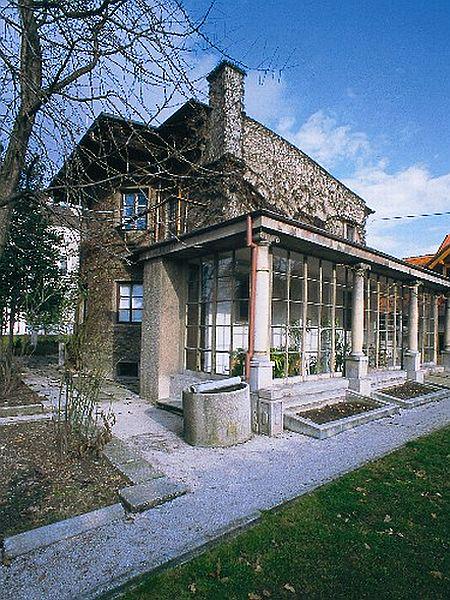
Decades after his death, Jože Plečnik remains Slovenia’s most famous architect of all time. By combining classical design elements with a fresh new approach, he pioneered a style uniquely his own – and his timeless, unconventional works in Ljubljana, Prague, and Vienna are now admired by architecture connoisseurs from around the world. But it is his house in the Ljubljana neighborhood of Trnovo that, perhaps more than any other structure, gives deep insight into the life of this ascetic genius.
Plečnik moved into the building in 1921, when he was in his late forties, and lived there for the rest of his life. The house was, however, always more than just a home. It was also his studio, where he came up with some of his most ingenious designs, many of them pro bono works for the city of Ljubljana. It was also a classroom; Plečnik was a professor at the University of Ljubljana and, on occasion, held lectures in his home – especially during World War II, when the conflict made it difficult for students to attend regular classes. Some of the students who came to watch the master at work eventually became the leading lights of Slovenian architecture themselves.
The importance of Plečnik’s house is belied by its simplicity. Plečnik was an intensely modest man, and his approach to life is reflected in many of the interior elements: from a simple stove-heated bathroom to an ingeniously designed desk which he could use for both working and eating.
In fact, the house is a reflection of both Plečnik’s personality and his approach to architecture. As a consummate designer among architects, he believed that every item had to reflect the overall style of a building, and the graceful furniture in his home perfectly complements the simple-yet-sophisticated lines of the rest of the house.
Plečnik’s characteristic fusion of the old with the new is on display throughout the home. The architect was famous for reinterpreting classical elements in a new way – some critics have even dubbed him an early post-modernist --, and throughout his home, he incorporated Roman mosaics and other fragments into the building’s walls. Because Plečnik deplored waste, he reused columns and stones that were left over from the construction of his other projects when constructing a small conservatory.
Other objects in the home appear to be more mundane at first glance, but provide valuable insight into the private life of the reclusive architect. Plečnik’s architectural drawings and other equipment have been left on his desk exactly the way he left them when he died in 1957 – as have his glasses and even a pair of boots under the desk. While much of is house remains in its original condition, a small part of the building houses an exhibition of various objects connected with Plečnik and his work, from his tools and his library to the various objects he had designed during the course of his long and unconventional career.

































































